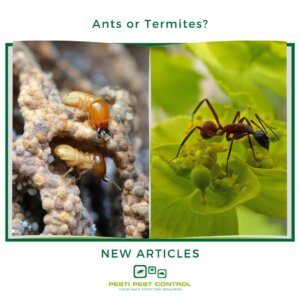 When the weather gets warmer and the flowering season begins, you will probably notice a significant increase in flying insects, such as flies, bees and wasps. You’ll want to do what you can to control these insects and allow them to do their work without bothering you, so how do you stay safe as this season unfolds?
When the weather gets warmer and the flowering season begins, you will probably notice a significant increase in flying insects, such as flies, bees and wasps. You’ll want to do what you can to control these insects and allow them to do their work without bothering you, so how do you stay safe as this season unfolds?
Tackling Wasp Nests
If you get a wasp sting, you’ll know all about it, so the best approach is to prevent them from building any nests nearby.
Certainly, you can take steps to remove any wasp nests, but it’s far easier to discourage them instead.
There are several wasp species in Australia, but they all have a similar appearance. The abdomen is relatively narrow and will be yellow, black and red in colour. When it comes to paper wasp control, they tend to build their nests beneath branches or under the eaves, while “mud-daubing” insects use mud, as the name implies and will plaster the nest onto a wall or ceiling. European wasps are the most commonplace and can build extremely large wasp nests if left unchecked. Unlike the other species, they tend to build their nests in the ground, although they may also set up shop inside the cavity wall or the eaves.
Trim back bushes or branches that may be near your home, and regularly inspect the outside for any wasp activity. You can deal with individual wasps by having a purpose-made aerosol can on hand. You can spray insecticide under the eaves to discourage nests. Otherwise, if you want to know the best way to remove a wasp nest, bring in a pest control expert to help.
Bee Control
When it comes to bees, they tend to be somewhat more passive but can give you a very severe sting if you’re not careful. In Western Australia, the honeybee tends to be the most common, although there are many different species across the country.
As you may know, there are numerous commercial honeybee hives, but individual insects can get away from these areas and may look to set up a nest elsewhere. They may want to infiltrate the cavity walls in your house, establish a beehive under the roof, or even make a nest in the ground.
As with all wasp and bee control, trim back any branches or bushes and pay close attention to the eaves around your home. Seal off any access points, and if you see any solitary bees flying around your property, pay attention to where they are. If you can now see bees going in and out of that area, you need to call in an experienced pest controller to handle removal.
Dealing with Flies
Common or garden flies are not dangerous in the sense that bees or wasps can be, but they are certainly annoying. They are also dirty, so you need to take action if you have an infestation.
To prevent flies from entering your home, install screens over windows and doors or keep them closed. Always keep food in a cupboard and get rid of any leftovers efficiently. You should keep your compost bin and rubbish cans tightly covered at all times, and it’s best if you don’t leave cat or dog food out.
Taking Action
If you’ve run into trouble with bees, flies or wasps, get in touch with one of the pest control companies in Perth for further advice.




